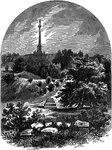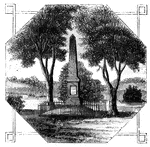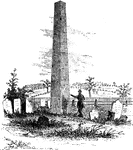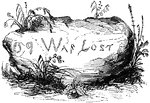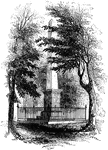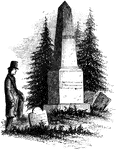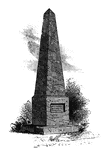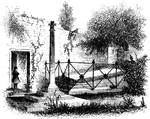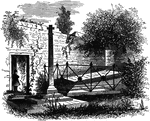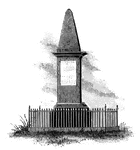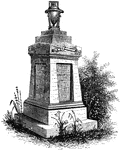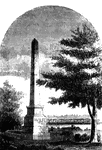The 1763-1788 American Revolution Monuments and Grave Sites ClipArt gallery includes 61 illustrations of the resting places of major figures of the American Revolution.
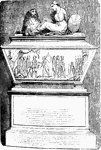
John André's Monument
Major John André's monument in Westminster Abbey. André was executed as a spy by Americans in 1780.…
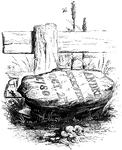
Andre's Execution
"Place of execution. The place of Andre's execution is now designated by a stone, lying on the right…

Monument to Andre
A monument to mark the spot of the site where the British spy Andre was hanged and buried in 1780.
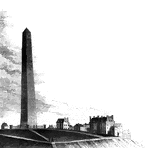
Bunker Hill Monument
"Bunker Hill Monument. This monument stands in the center of the grounds included within the breast-works…
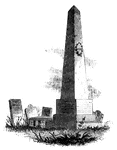
Caldwell's Monument
Caldwell's monument. The following are the inscriptions upon the Caldwell monument: East Side: "This…

Campbell's Monument
Campbell's Monument. This rude memorial was erected in 1831, by J. W. Barber, Esq., of New Haven, the…

Chatham's Monument
"Chatham's monument, Westminster Abbey. William Pitt, the first Earl of Chatham, was born on the 5th…

Cochran Grave
Grave of Colonel Robert Cochran, who commanded a detachment of militia at Fort Edward at the time of…
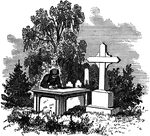
Richard Dale's Monument
The monument of Richard Dale (1756-1826), a naval officer born in Norfolk County, VA.
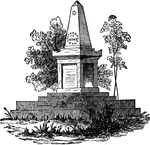
Baron de Kalb's Monument
Monument to Johann von Robaii, Baron de Kalb a German soldier and volunteer who served as a major general…

Ethan Allen Tomb
Tomb of Ethan Allen as seen in 1851. Shortly thereafter, this original plaque disappeared. In 1858,…

Fraser Burial
Fraser's burial-place. The hill on which the 'great redoubt' was erected, and where General Fraser was…

Goshen Monument
"Monument at Goshen. During the battle, Major Wood, of Goshen, made a masonic sign, by accident, which…
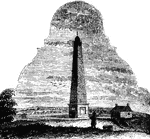
Groton Monument
"Monument at Groton. This is a view from the southwest angle of old Fort Griswold, looking northeast.…
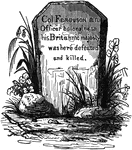
Monument on King's Mountain
The Battle of Kings Mountain, October 7, 1780, was an important Patriot victory in the Southern campaign…
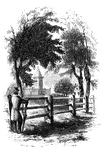
Lexington Monument
"Monument at Lexington. This view is from the Concord Road, looking eastward, and shows a portion of…

Richard Montgomery's Monument
Richard Montgomery's Monument, states: "This monument is erected by order of Congress, 25th of January,…

Nelson Tombs
"The Nelson Tombs. This view is from the burial-ground looking down the York River toward Chesapeake…
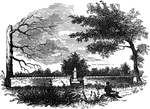
Paoli Monument
The Battle of Paoli (also known as the Battle of Paoli Tavern or the Paoli Massacre) was a battle in…
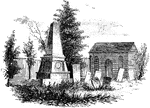
Paulding's Monument and St. Peter's Church
"Paulding's Monument and St. Peter's Church. The site of this church and the grave-yard was a gift of…

Pulaski Monument
An illustration of the Pulanski monument located in Savannah, Georgia. Pulaski was laid out in 1837…
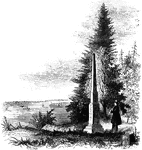
Red Bank Monument
"Monument at Red Bank. This view includes the monument, a portion of the Delaware, and the mouth of…

Sarcophagus of Washington
"The sarcophagus of Washington. This was placed in the family vault in the autumn of 1837."—Lossing,…

Seabury's Monument
"Bishop Seabury's Monument. The following is the inscription upon the slab: 'Here lieth the body of…

Symmes's Monument
John Cleves Symmes (July 21st, 1742–February 26, 1814) was a delegate to the Continental Congress…
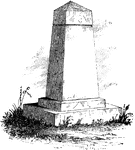
Treaty Monument
"Treaty Monument. This monument stands near the intersection of Hanover and Beach Streets, Kensington,…

Triumphal Arch for the Reception of General Washington
A triumphal arch is a structure in the shape of a monumental archway, in theory built to celebrate a…
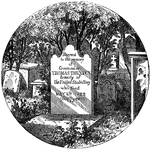
Thomas Truxtun's Grave
Thomas Truxtun (February 17, 1755 – May 5, 1822) was an American naval officer who rose to the rank…

Van Wart's Monument
"Van Wart's monument. The following are the inscriptions upon this monument: North Side: 'Here repose…

Warren's Monument
Warren's Monument was created in memory of Mason and fallen Bunker Hill hero Dr. Joseph Warren in 1794…

Washington Monument
"Washington Monument. The following are the inscriptions on the monument: East front: 'To George Washington,…
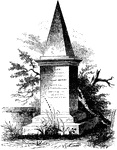
Wayne's Monument
General Anthony Wayne's monument at St. David's Episcopal Church, Radnor, Pennsylvania.
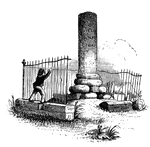
Wolfe's Monument
Wolfe's Monument. Since 1848, the remains of this monument have been removed, and a column forty feet…
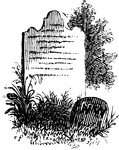
Woodhull's Grave
"Woodhull's Grave. Nathaniel Woodhull was born at Mastic, Long Island, December 30, 1722. Agriculture…
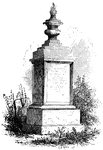
Woodhull's Monument
"Woodhull's Monument. This monument stands on the south side of the church. It is of white marble, about…

The Wyoming Monument
The Monument marks the grave site of the bones of victims of the Wyoming Massacre, which took place…
